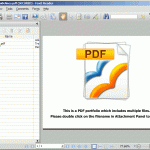We, the public, need a free and professional press. Fortunately, in Canada, the “free” part is not usually an issue. But recently the “professional” part certainly took a beating, in my opinion, certainly on the television.
First up is the rail tragedy in Lac-Mégantic, Quebec. I never thought I’d say this about the Milquetoast Peter Mansbridge, the Canadian Broadcasting Corporation’s chief correspondent and anchor of The National news programme, but where is the guy? In his place we’ve had Mark Kelley anchoring the “show” (as he himself called it) nightly from the dark streets of Lac-Mégantic, giving us hand-wringing man-on-the-street interview after hand-wringing man-on-the-street interview with grieving survivors and residents, done by him and his team of reporters, some seemingly reeled in from other parts of the country in an attempt to leave no grieving resident unturned.
Then the hue and cry started to arise about the conspicuous absence of the chairman of The Montreal, Maine and Atlantic Railway, Inc. (owners of the runaway train), Edward Burkhardt. Mark Kelley set the tone the night before Burkhardt was scheduled to show up in Lac-Mégantic, four days after the derailment, by seeming to discount anything Burkhardt might say on his arrival. And so it was that Burkhardt arrived in Lac-Mégantic and promptly made a fool of himself. However, he was aided and abetted in that endeavour by so-called journalists, whose weighty questions included, “How much are you worth?” and “Did you sleep last night?” What the hell?! What the fuck does that have to do with anything?! If we’re going to hang everyone in Lac-Mégantic who has slept since the disaster on 6 July, we’re going to run out of lamp posts! The press displayed a pack mentality, savaging Burkhardt in a most tawdry and unprofessional manner like sharks in a blood-fuelled frenzy.
On a side note, Edward Burkhardt really does need to fire himself as the public face of his company until he gets some professional help in handling the press. That, some help with showing a little more empathy (he has the words figured out; he needs help with the delivery) and a kick in the arse for hanging his employee and a volunteer fire department out to dry before a full investigation, will help him and his companies immensely after future accidents. But he doesn’t deserve death threats.
And another side note is this use of the term “show” to describe a news programme. As I’ve pointed out, Mark Kelley of the CBC used this term, and I’ve heard Dawna Friesen of Global News refer to her news programme as a “show” too. My Concise Oxford Dictionary defines a “show” as, among other things:
· n.
1 a spectacle or display.
2 a play or other stage performance, especially a musical. > a light entertainment programme on television or radio.
Sadly, the use of the term “show” is actually accurate these days, especially with respect to the “light entertainment” part, as I’ll demonstrate in a moment. However, it shouldn’t be. I don’t watch, listen to or read the news to be entertained. (It’s mostly about death and destruction anyway. How is that entertaining?!) I’m not interested in the weather reporter with a joke a minute, or the (not so) witty repartee between the news reader and the sports guy. Sadly, I think I’m in the minority.
The other news item that sickens me is the treatment of the death of some Hollywood actor. Umm, what’s his name again? (Do web search for “dead actor”.) Oh yeah, some guy named Cory Monteith. I guess he was on some popular TV show or another, actually, so maybe he’s not actually a “Hollywood actor”.
Any death is a tragedy for someone, usually that person’s family and friends, not to mention the deceased him- or herself. Sorry, but Cory and I didn’t know each other, therefore I am not a friend of his and I’m pretty sure he’s also not a member of my extended family. (If either were true, I wouldn’t be getting my news about him off the TV.) So, as a human being, I extend my condolences to the Monteith family and Cory’s friends. However, I’m not going to grieve for him, and the “news shows” should not expect that I will. Nor should they pander to and perpetuate the cult of celebrity worship.
But what is truly sickening to me is that Monteith’s death was the lead item, getting a full five or six minutes of coverage on the six o’ clock news on Global News on 14 July (and a similar amount of time on CBC’s national news, although at least a predicted federal cabinet shuffle got top billing), while the deaths of two nameless “nobodies” on the following two news stories were accorded thirty seconds each. Where is the sense of proportion?!
Again, I’m probably in the minority with respect to the “light entertainment” that news has become; these days, it seems, if it’s not entertaining and keeping our short attention spans occupied, it’s apparently not worth paying attention to. After all, there’s probably a competitor with a shinier, more entertaining “show” on another channel. However, I don’t think it’s too much to expect a modicum of professionalism and at least an attempt at a veneer of impartiality from journalists when it comes to thinking of questions to ask stunned officials on the scene of a deadly disaster.



